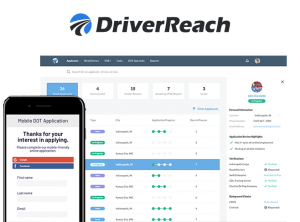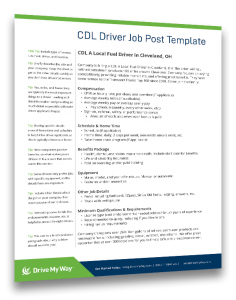
To have an edge on your competition and hire the best drivers, a fast and efficient application and screening process is important. However, many teams struggle with various pieces of the hiring puzzle. Sometimes finding the perfect candidate is the hardest part. Other hiring teams find interviewing candidates is their biggest challenge. For others, working through the numerous verifications required by the Federal Motor Carries Safety Association (FMCSA) is the toughest task. For those teams struggling with the CDL employment verification process, here’s 3 ways to streamline your recruiting.
1. Know Exactly What You Need to Do
FMCSA requires every candidate to go through a comprehensive screening process before they’re fully hired. This includes the need for a verification of employment (VOE). Additionally, each candidate needs their driving and safety history checked. In addition, there are also necessary checks for drug, substance abuse, and alcohol test records as well as refusals to test and other specific driving information. Check to be certain you know exactly what you need to do.
Once you’ve got the comprehensive list of required verifications needed, be sure to do it for EVERY hire.
As part of your CDL employment verification process, ensure that your team is clear on what needs to be done and by when. Also make sure that your team has access to the most current information, as periodic changes to the regulations take place.
2. Stop Using Manual Processes
If you’re still doing VOEs on paper forms and faxing documents to verify a driver’s work history, this entire process can be automated. Let technology help increase your efficiency. If you keep doing things the same way that you always have, you will get those same old results.
There are so many tools available to help you do this process electronically. You can get verifications in a matter of minutes or hours, not days and weeks. If you do this, you’ll have less chance of drivers walking away from you to your competition because they can move faster.
3. Need an ATS to Help You?
For those carriers still struggling with CDL employment verification, we’ve got an opportunity for you.
As a partner with Drive My Way, we are extending a discount to our customers in need of an ATS.
DriverReach will help you get engaged quality candidates, streamline the employment verification process, and ensure compliance with the new Clearinghouse requirements, all while providing KPI metrics to improve your overall hiring process. If you’re not already using an ATS, or looking for a new one, take advantage of this offer!




 This is essential. When drivers look at your job description, they want to know exactly what you are offering. No surprises later on. As an employer, it can be intimidating to clearly note every critical part of your job offering, but transparency and specificity are key. Whether you’re a big or
This is essential. When drivers look at your job description, they want to know exactly what you are offering. No surprises later on. As an employer, it can be intimidating to clearly note every critical part of your job offering, but transparency and specificity are key. Whether you’re a big or 

















 Trend 2: More Workers Go Straight to College or the Trades
Trend 2: More Workers Go Straight to College or the Trades Trend 4: Most Current Drivers are Men
Trend 4: Most Current Drivers are Men



